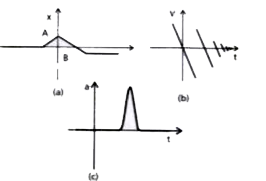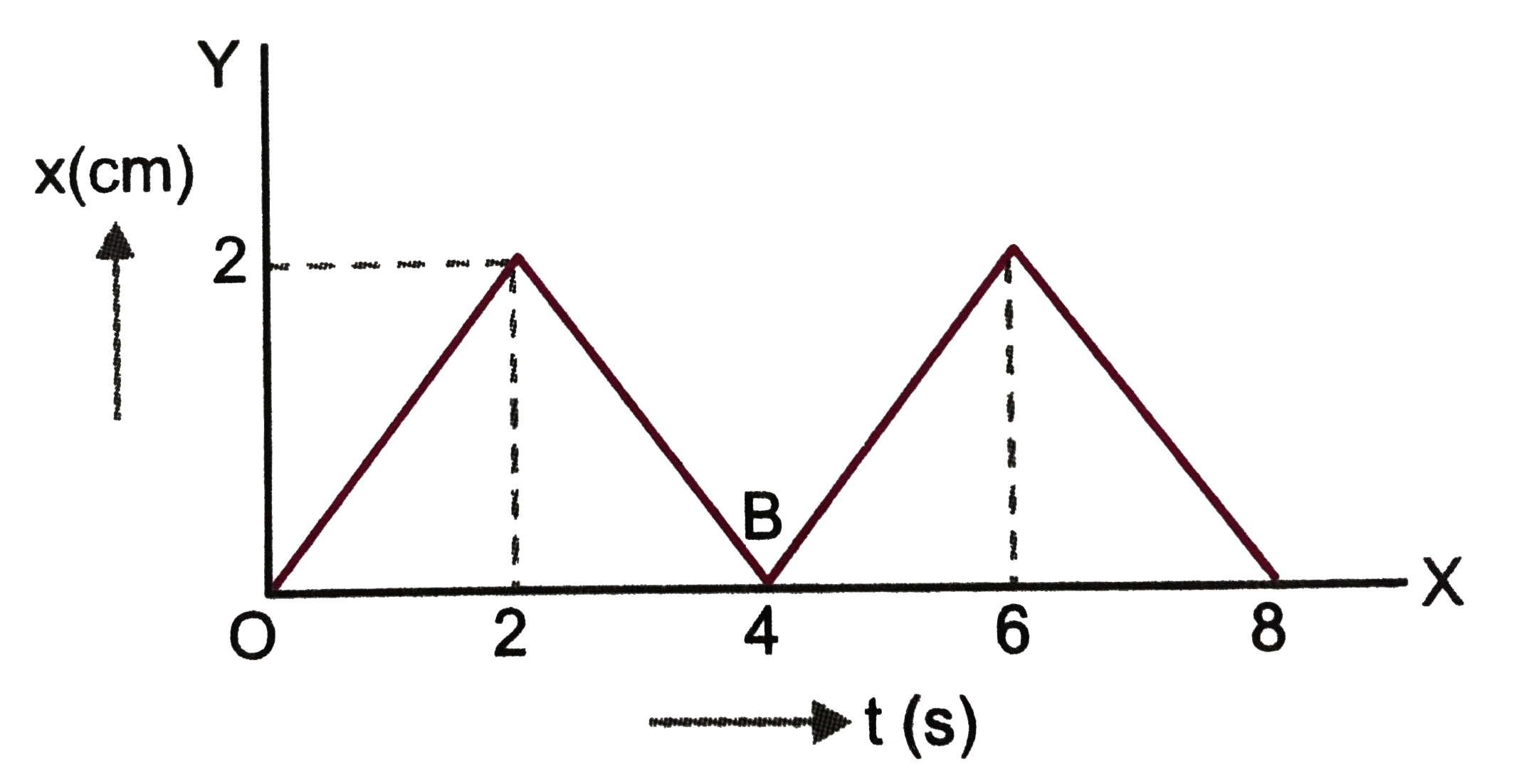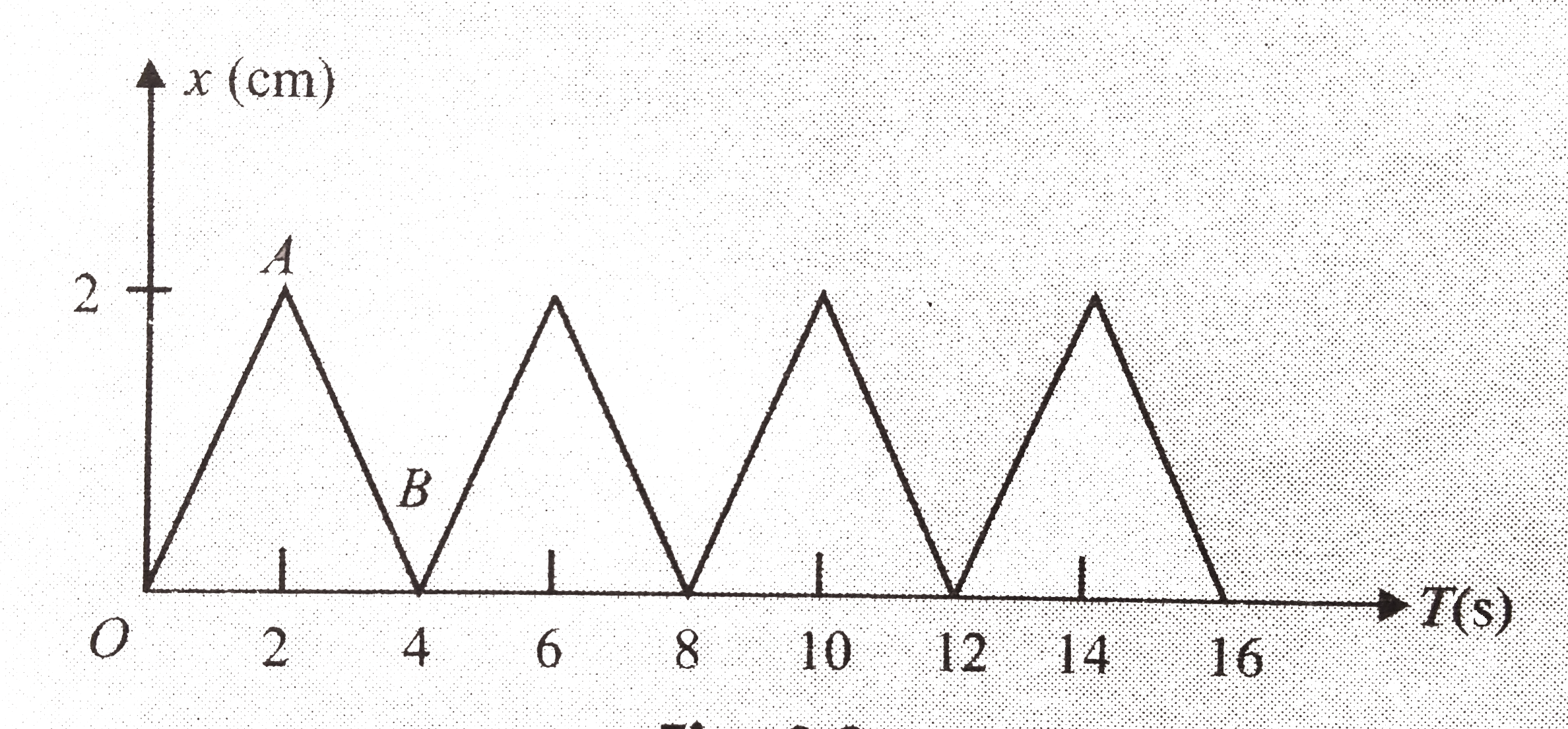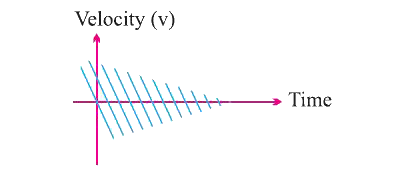Suggest a suitable physical situation for each of the following graphs (Fig.) :

Text Solution
In fig(a) : The x - t graph shows that intially x is zero i.e, at rest, then it increases with time, altains a constant value and again reduces to zero with time, then it increases in opposite direction till it again attains a constant value i.e., comes to rest. The similar physical, situation arises when a ball resting on a smooth floor is kicked which rebounds from a wall with reduced speed. If then moves to the opposite wall which stops it.
In fig(b) : The velocity changes sign again and again with passage of time and every time some similar speed is lost. The similar physical situation arises when a ball is thrown up with some velocity, returns back and falls freely on striking the floor, it rebounds with reduced speed each it strikes against the floor.
|
Similar Questions
Knowledge Check
 , Which of the following graphs is suitableA
, Which of the following graphs is suitableA B
B C
C D
D
Suggest a suitable oxidising reagent for the following conversions:

 Aa.MnO2 in (A) and CrO3 (in glacial acetic acid) in (B).Bb.CrO3 in (A) and MnO2 in (B).Cc.Both are correctDd.Both are incorrect
Aa.MnO2 in (A) and CrO3 (in glacial acetic acid) in (B).Bb.CrO3 in (A) and MnO2 in (B).Cc.Both are correctDd.Both are incorrectSuggest the suitable reagent for the following transformation.
 Ameta-chloroperbenzoic acidBozoneCpotassium dichromateDalkaline hydrogen peroxide
Ameta-chloroperbenzoic acidBozoneCpotassium dichromateDalkaline hydrogen peroxide
Suggest a suitable oxidising reagent for the following conversions:


View SolutionSuggest a mechanismfor each of the following reactions:

View SolutionShows the position time graph of a particle of mass 0.04 kg Suggest a suitable physical context for this motion What is the time between two conscutive impulse recevived by the particle ? What is the magnitude of each impulse ?

View SolutionSuggest the suitable reagent for the following transformation.

View SolutionFigure shows the position-time graph of a particle of mass 0.04kg. Suggest a suitable physical context for this motion. What is the time between two consecutive impulses received by the particle? What is the magnitude of each impulse?

View Solution

